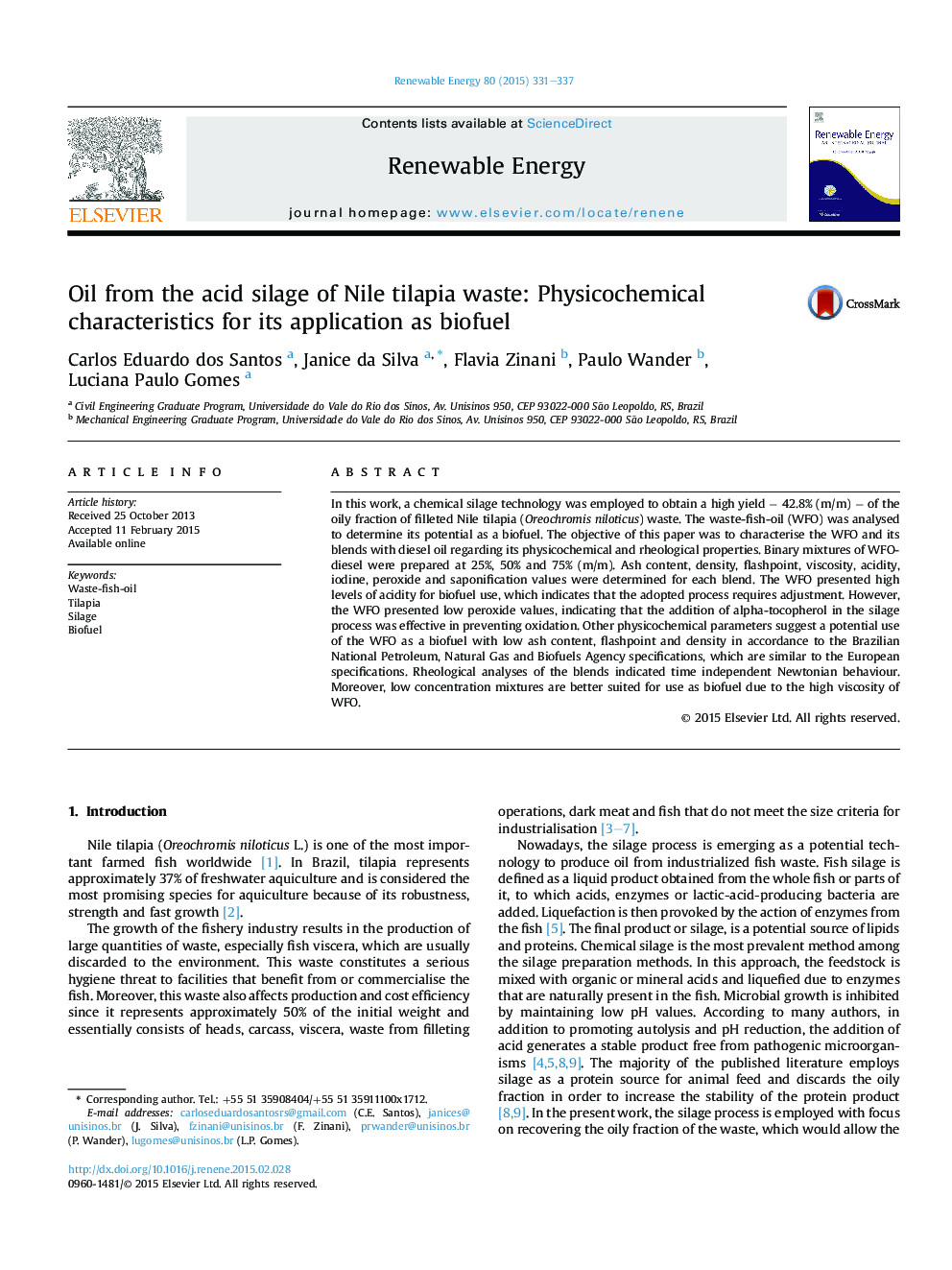| Article ID | Journal | Published Year | Pages | File Type |
|---|---|---|---|---|
| 6767267 | Renewable Energy | 2015 | 7 Pages |
Abstract
In this work, a chemical silage technology was employed to obtain a high yield â 42.8% (m/m) â of the oily fraction of filleted Nile tilapia (Oreochromis niloticus) waste. The waste-fish-oil (WFO) was analysed to determine its potential as a biofuel. The objective of this paper was to characterise the WFO and its blends with diesel oil regarding its physicochemical and rheological properties. Binary mixtures of WFO-diesel were prepared at 25%, 50% and 75% (m/m). Ash content, density, flashpoint, viscosity, acidity, iodine, peroxide and saponification values were determined for each blend. The WFO presented high levels of acidity for biofuel use, which indicates that the adopted process requires adjustment. However, the WFO presented low peroxide values, indicating that the addition of alpha-tocopherol in the silage process was effective in preventing oxidation. Other physicochemical parameters suggest a potential use of the WFO as a biofuel with low ash content, flashpoint and density in accordance to the Brazilian National Petroleum, Natural Gas and Biofuels Agency specifications, which are similar to the European specifications. Rheological analyses of the blends indicated time independent Newtonian behaviour. Moreover, low concentration mixtures are better suited for use as biofuel due to the high viscosity of WFO.
Related Topics
Physical Sciences and Engineering
Energy
Renewable Energy, Sustainability and the Environment
Authors
Carlos Eduardo dos Santos, Janice da Silva, Flavia Zinani, Paulo Wander, Luciana Paulo Gomes,
